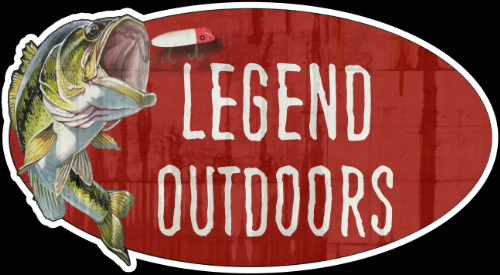Fishing for Panfish often takes a back seat to some of the larger more popular game fish. The largemouth or smallmouth bass and the Musky seem to outweigh the pursuit of some tasty bluegill or crappie.
With the ice coming off the lakes now is a key time to target these tasty critters. The panfish are feeding heavily on the new growth that the spring provides and it is easy to employ some of the same tactics that you have just used on the hard water to find and catch these pie plates.
In my opinion there is nothing like slowing things down a bit and chasing after spring panfish. They are often referred to as Gills, Seeds, Specks, papermouths, or slabs but no matter what you call them, they make some great table fare and offer a great challenge to catch.
You will find the bluegill up in the shallow bays and the newly forming weed flats. The rivers and feeder creeks are also great places to start. These fish will start to relate to the newly developing weeds and areas that are a mix of gravel and clay bottoms. They will start staging soon for the spawn and these are some good areas to key in on.
The crappie tends to like deeper water and can often be found suspended in the water column. Add in some trees or deep weeds for cover and you have found an ideal area to target these fish.
Having good electronics can really aid in the search for these pan sized fish. Turn up the sensitivity on your graph and search the areas for schools near cover. Use your sonar to find the harder bottoms as well as the transitional areas that are going to hold these fish
Near dusk these fish will often move up in the water column and suspend closer to the surface where they will feed on the plankton and other aquatic creatures. This, of course, does not mean that you will not find them during the mid day; you just need to spend some time searching out the cover.
The daylight hours are some prime times to find willing biters on most bodies of water. Wood structure and weeds are key to most species as the wood will warm the water faster in the sunlight and the weeds are giving off fresh oxygen into the water that will trigger the fish to become more active.
Locating the fish is half the battle. Now the key is to present a bait in a way that will trigger a strike. A technique that works well during these periods is the use of the same ice fishing techniques that you have perfected on the hard water. Small jigs tipped with spikes or waxies suspended under a float can put some big panfish in the boat.
If live bait isn’t your cup of tea then employ the use of plastics on a small jig. The plastics can be fished with or without a float, but presenting the bait with a float allows you to put that bait at the right depth and keep it there. This is important in getting those weary fish to strike.
The more supple the bait, the better action you will get out of it. You want something that will flicker in the water and entice these fish into striking.

Float fishing with plastics or live bait tipped jigs is an easy set-up. It will consist of your favorite ice jigs, your plastic of choice, a couple small split shots and a quality slip float. Use enough split shot to make the float neutrally buoyant so that you can detect the subtle lift of the crappie taking the jig or a gill swimming off with the bait.
When targeting bluegills you will want to put your bait just above the new weeds. It may take some experimenting with depth, but using the slip float makes it is easy to adjust the depth of your presentation
Crappies tend to feed upwards so make sure you don’t fish below the fish you are targeting. Suspending the bait above the school or structure will often draw the attention upwards and you can catch multiple fish without disrupting the school.
The technique is quite simple yet effective. Simply cast past the school or structure and allow your float to upright itself. Slowly drag the float near the area you want to fish and twitch the float several times. This will give the bait the action you need to attract the fish. Pause for a second or two and repeat. Often times the fish will strike as you pause the second time.
As we discussed earlier, live bait or plastics will both put fish in the boat. The use of either, or even both, is solely up to you. It never hurts to have a little meat on your offering.
Using plastics instead of live bait will allow you to catch multiple fish on one bait and if the mood of the fish changes, then you can easily change colors or profiles of the baits. Mix it up a bit and change colors, shapes, sizes, etc until you find the key to trigger these fish.
Spring panfishing is simple, the fishing can be fast paced, and the end result is a livewell full of some great tasting table fare.
So when the ramps are set free from the ice and the boat is uncovered, dust off those light action rods, spool up with some light line and hit the water. There might be a chill in the air, but there is nothing better to warm the spirit than a hard fighting bluegill or a slab crappie as it comes to hand.
Good luck and stay safe!

